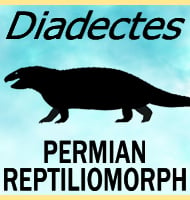Limnoscelis
In Depth Limnoscelis is a genus of diadectomorph that lived in North America during the early Permian period. Diadectomorphs (there name taken from the genus Diadectes) are often identified as being herbivorous, though Limnoscelis seems to be an exception to this with the dentition and body form of a primitive predator. Limnoscelis however was not … Read more
